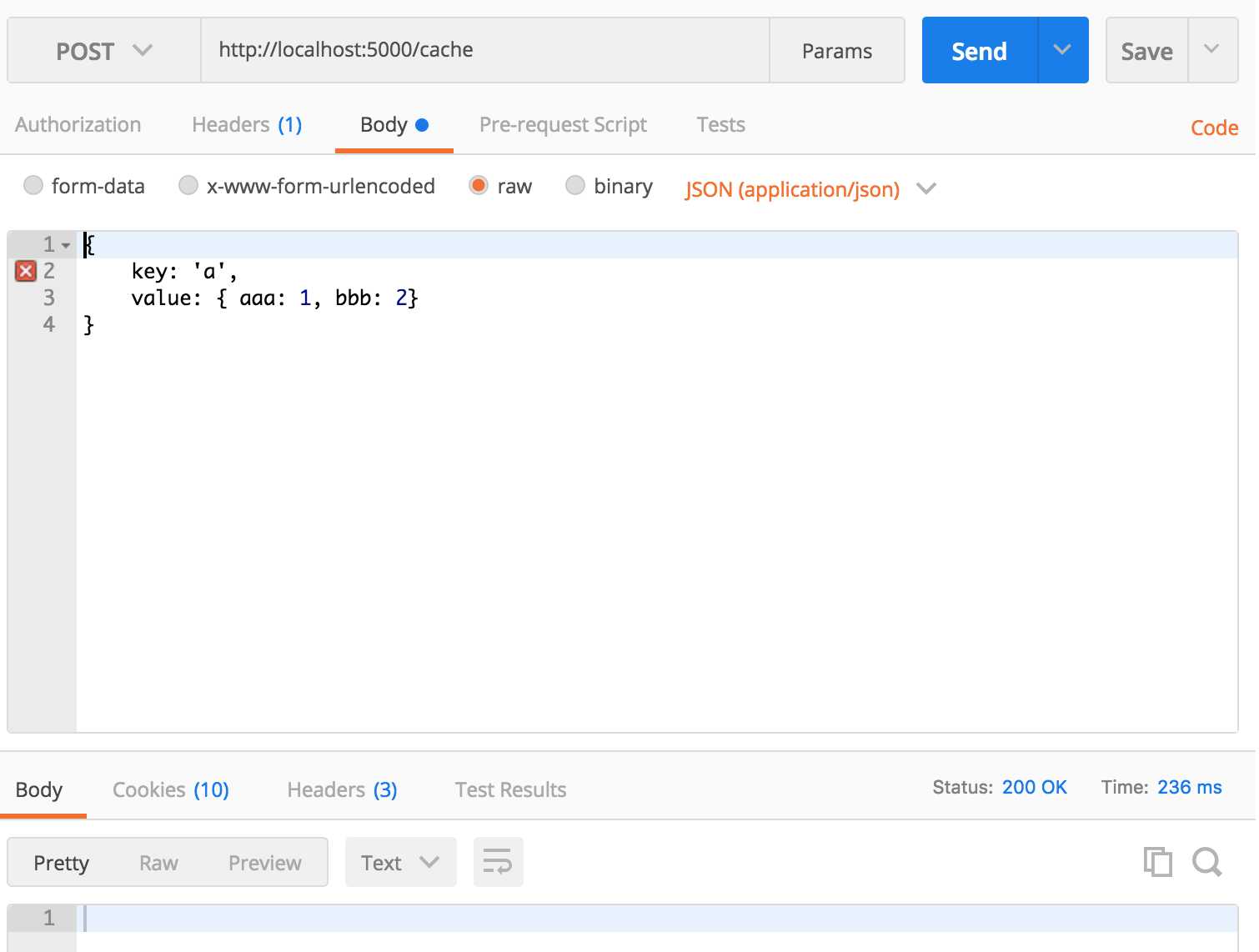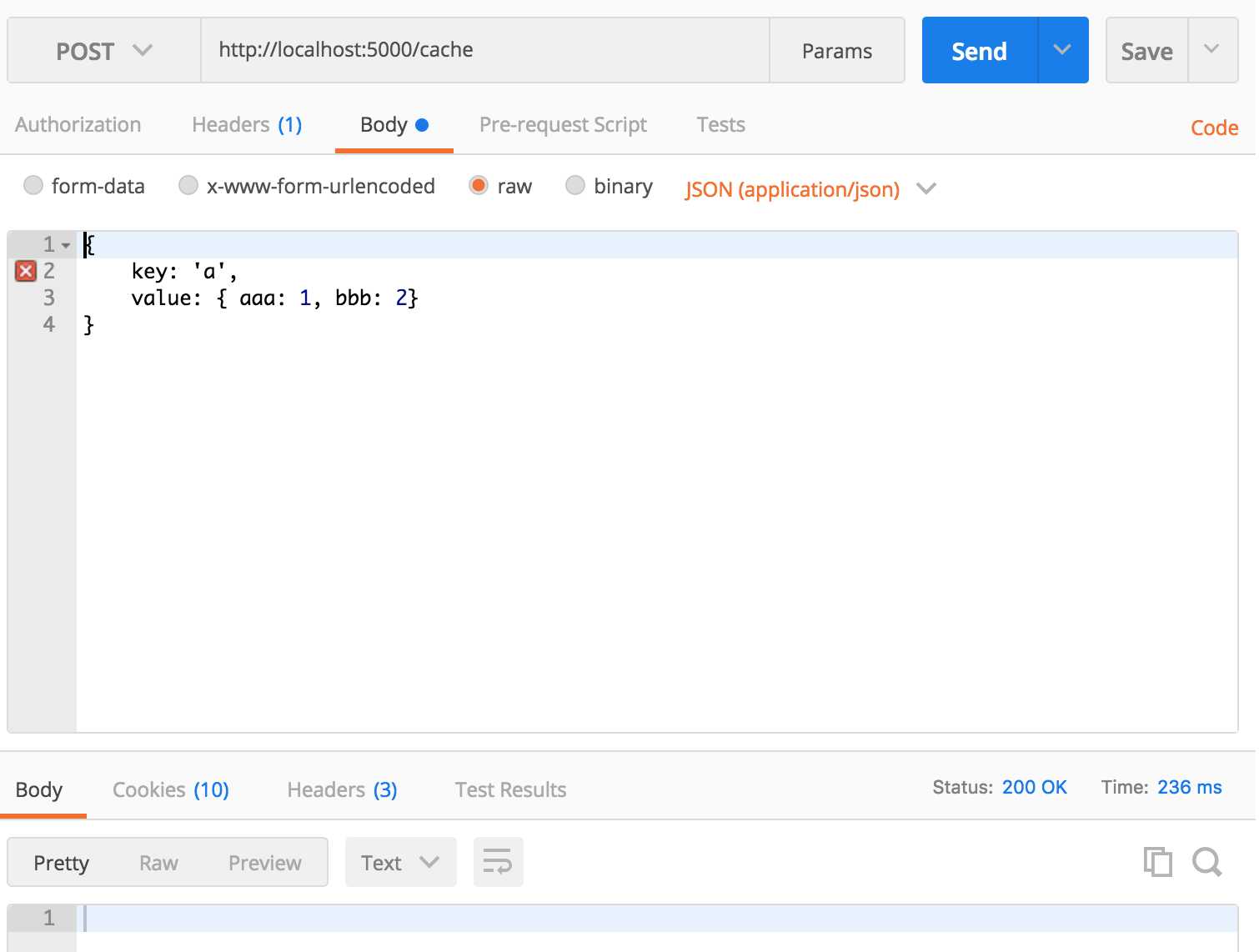C#系列之聊聊.Net Core的InMemoryCache
2021-07-15 09:15
标签:体会 实现 先来 console sof try gets change services 作者:暴王 这两天在看.net core的in memory cache,这里记录一下用法,主要涉及MemoryCache的Get/Set/Expire/Flush。 因为我们要用到 Microsoft.Extensions.Caching.Memory这个nuget包,所以需要添加引用,用VsCode(或任何编辑器)打开刚才建的mvc项目路径下的*.csproj文件,在这里我的是cache.csproj,找到 注意版本号可能不一样,我用的是.net core 2.0. ConfigureServices方法看起来应该是这样: 之后我们就可以在controller里通过构造注入的方式使用InMemoryCache啦。 先来看看MemoryCache的定义: 我们用到的大部分都是 扩 展 方 法,这是一个奇怪的现象,但这不是这篇文章讨论的重点,这里会使用到 这两个方法,来Get/Set/Expire缓存项。 首先我们来添加一个get的webapi: 它接受一个key作为参数,如果找到则返回找到的值,若找不到则返回空 来启动web项目,之后我们可以通过 这个url来访问cache,此时cache还没有值 Constructors: Properties: Extension Methods: 这里有几个概念: SlidingExpiration CacheItemPriority RegisterPostEvictionCallback 接着我们来添加一个Set方法,并且为它添加一个canceltoken,以便我们能够手动控制强制清空缓存。 然后我们就可以用postman的post请求来Set缓存了,地址是: 接下来我们来添加一个flush api,我们能够手动清空缓存。这里我们利用了上面在Set时添加的cancellationTokenSource 访问地址: 调用这个api会发现在console里有一行输出 可以在多个缓存项中添加同一个token,达到同时清除多个缓存项的目的。 遇到的坑: 然后发现调用flush一直不生效,cache并没有被清掉,很纳闷,以为我的token方法用的有问题。 仅仅是一个static的问题,就产生了不一样的结果,这是因为每次httprequest过来,都会启动一个新线程去响应它,因此在set的时候加进去的那个token,并不是flush请求过来的token,因为又调用了一次构造方法,生成了一个新的CancellationTokenSource对象,因此调用token.Cancel()方法必然会失效,因此改成了static,让每次请求的都是同一个token,这样就不会造成不同token导致的Cancel方法不work的问题,清空cache也就能正常工作了。 2.RegisterPostEvictionCallback重复触发的问题 RegisterPostEvictionCallback不仅仅在缓存超时的时候触发,也会在缓存被替换(更新)的时候触发,在PostEvictionDelegate有一个参数为EvictionReason指明了缓存项被移除的原因 因此我们需要在callback里根据需要判断缓存是因为什么原因被移除,才能避免意外的回调触发。 C#系列之聊聊.Net Core的InMemoryCache 标签:体会 实现 先来 console sof try gets change services 原文地址:https://www.cnblogs.com/xiandnc/p/9517017.html
个人博客:http://www.boydwang.com/2017/12/net-core-in-memory-cache/
首先我们先用dotnet命令创建一个mvc的项目,这里我们将使用postman来请求server,dotnet new MVC
之后我们需要注册cache服务,打开Startup.cs文件,找到ConfigureServices方法,添加如下代码:services.AddMemoryCache();public void ConfigureServices(IServiceCollection services)
{
services.AddMemoryCache();
services.AddMvc();
}
打开HomeController或者自己新建一个Controller,在修改构造方法private IMemoryCache _cache;
public HomeController(IMemoryCache cache)
{
this._cache = cache;
}Constructors:
MemoryCache(IOptions)
Properties:
Count(Gets the count of the current entries for diagnostic purposes.)
Methods:
Compact(Double)
CreateEntry(Object)
Dispose()
Dispose(Boolean)
Finalize()
Remove(Object)
TryGetValue(Object, Object)
Extension Methods:
Get(IMemoryCache, Object)
Get(IMemoryCache, Object)
GetOrCreate(IMemoryCache, Object, Func)
GetOrCreateAsync(IMemoryCache, Object, Func>)
Set(IMemoryCache, Object, TItem)
Set(IMemoryCache, Object, TItem, MemoryCacheEntryOptions)
Set(IMemoryCache, Object, TItem, IChangeToken)
Set(IMemoryCache, Object, TItem, DateTimeOffset)
Set(IMemoryCache, Object, TItem, TimeSpan)
TryGetValue(IMemoryCache, Object, TItem)TryGetValue(Object, Object)
Set[HttpGet("cache/{key}")]
public IActionResult GetCache(string key)
{
object result = new object();
_cache.TryGetValue(key, out result);
return new JsonResult(result);
}
现在我们可以在命令行里输入dotnet restore
dotnet runhttp://localhost:5000/cache/{key}
因为此时我们还没有set值。
接下来添加一个Set方法,在添加之前,我们先来看一下MemoryCacheEntryOptions的定义。
MemoryCacheEntryOptions()
AbsoluteExpiration
AbsoluteExpirationRelativeToNow
ExpirationTokens
PostEvictionCallbacks
Priority
Size
SlidingExpiration
AddExpirationToken(MemoryCacheEntryOptions, IChangeToken)
RegisterPostEvictionCallback(MemoryCacheEntryOptions, PostEvictionDelegate)
RegisterPostEvictionCallback(MemoryCacheEntryOptions, PostEvictionDelegate, Object)
SetAbsoluteExpiration(MemoryCacheEntryOptions, DateTimeOffset)
SetAbsoluteExpiration(MemoryCacheEntryOptions, TimeSpan)
SetPriority(MemoryCacheEntryOptions, CacheItemPriority)
SetSize(MemoryCacheEntryOptions, Int64)
SetSlidingExpiration(MemoryCacheEntryOptions, TimeSpan)
AbsoluteExpiration
代表了绝对绝对超时时间,在一定时间后必定超时(比如15分钟)
代表了滑动超时时间(我自己翻译的。。),滑动的意思就是假如你设置了SlidingExpiration超时时间为5分钟,如果在5分钟里,有新的请求来获取这个cached item,那么这个5分钟会重置,直到超过5分钟没有请求来,才超时
这是一个枚举,代表了缓存的优先级,默认值为Normal,如果设置为NeverRemove则一直不超时。High
Low
NeverRemove
Normal
这是个方法需要传一个回调,在缓存项被移除(超时)的时候触发回调。private static CancellationTokenSource cancellationTokenSource = new CancellationTokenSource();
[HttpPost("cache/")]
public IActionResult SetCache([FromBody]CacheItem item)
{
var cacheEntryOptions = new MemoryCacheEntryOptions()
.SetAbsoluteExpiration(TimeSpan.FromMinutes(5))
.RegisterPostEvictionCallback(DependentEvictionCallback, null)
.AddExpirationToken(new CancellationChangeToken(cancellationTokenSource.Token));
_cache.Set(item.key, item.value, cacheEntryOptions);
return Ok();
}http://localhost:5000/cache
[HttpGet("cache/flush")]
public IActionResult Flush()
{
cancellationTokenSource.Cancel();
return Ok();
}http://localhost:5000/cache/flushParent entry was evicted. Reason: TokenExpired, Key: a.
1.token不work的问题.
我在最初实现的时候,加了一个token,是这么写的private CancellationTokenSource cancellationTokenSource;
public HomeController(IMemoryCache cache)
{
this._cache = cache;
cancellationTokenSource = new CancellationTokenSource();
}
[HttpGet("cache/flush")]
public IActionResult Flush()
{
cancellationTokenSource.Cancel();
return Ok();
}
直到我换成了下面的代码,大家体会一下。private static CancellationTokenSource cancellationTokenSource = new CancellationTokenSource();
public HomeController(IMemoryCache cache)
{
this._cache = cache;
}
[HttpGet("cache/flush")]
public IActionResult Flush()
{
cancellationTokenSource.Cancel();
return Ok();
} public delegate void PostEvictionDelegate(object key, object value, EvictionReason reason, object state);EvictionReason
None = 0,
Removed = 1, 缓存项被Remove()方法移除
Replaced = 2, 缓存项被更新
Expired = 3, 缓存项超时
TokenExpired = 4, 缓存由token触发超时
Capacity = 5 缓存空间不足
文章标题:C#系列之聊聊.Net Core的InMemoryCache
文章链接:http://soscw.com/index.php/essay/105514.html